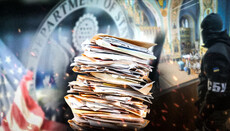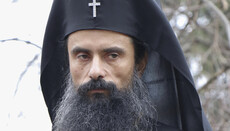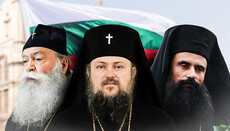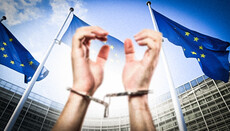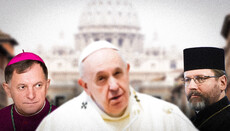Anniversary of OCU recognition by Hellas: Illusion of the Church and unity
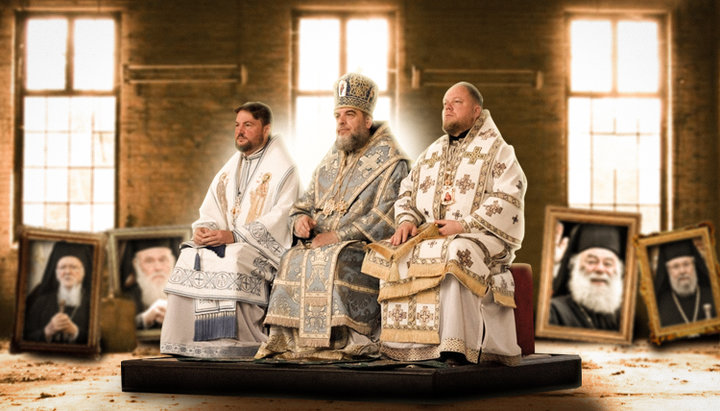
On November 10, 2019, the Greek Primate commemorated Dumenko at the Liturgy. Has this "recognition" added to the growth of the OCU and unity of believers in Ukraine?
Tomorrow, on November 10, it will be exactly one year since the Primate of the Greek Orthodox Church, Archbishop Ieronymos, first mentioned the name of Sergei (Epiphany) Dumenko during the Divine Liturgy.
Earlier, on August 26, 2019, at one of its meetings the Holy Synod of the Church of Greece "recognized the canonical right of the Ecumenical Patriarch to grant Autocephaly, as well as the privilege of the Primate of the Church of Greece to further resolve the issue of recognizing the Church of Ukraine." On October 12, the Council of Bishops of the GOC ratified this decision. On October 19, during a divine service in Thessaloniki, with the concelebration of the Greek hierarchs and the Primate, Patriarch Bartholomew pronounced the name of Dumenko, and on November 10, the head of the Church of Greece, Archbishop Ieronymos, did the same.
Archbishop Ieronymos grounded his decision to enter into Eucharistic communion with the Ukrainian schismatics (and the liturgical commemoration implies this communion) in the so-called "peace missive", which he sent to Dumenko. It says that “the autocephaly of the OCU rectified the division in the flock of our Lord's Archpastor” and that “the barrier that stood in the middle between you and us, the Orthodox and brothers in everything, the barrier that separated us causing sorrows, major scandals and great harm to the entire Church and the joint witness of Orthodoxy in the modern world was finally broken down." In addition, Archbishop Ieronymos of Athens and All Greece wished the head of the OCU "to completely lift up from the Church of Ukraine the commotion which disturbed Her destroying Her unity, and to fully restore in the Church peace, tranquility, and sustainability for God’s sake and the entire oikumena of Orthodoxy."
Actually, a year ago, the Primate of the Church of Greece believed that the Tomos of the OCU had to be recognized for several reasons:
- It will help overcome divisions in the Orthodox world. "Sorrows, major scandals and great harm to the entire Church" will be eliminated.
- The Tomos will destroy the barrier that separated the "Orthodox brothers" in Greece and Ukraine.
- The Tomos should "lift up the commotion from the Church of Ukraine", "grant Her unity" and "restore peace, tranquility and susutainability in it."
After a year it is already possible to draw some conclusions from how efficiently the Tomos, granted by Patriarch Bartholomew, fulfilled its mission.
Has “causing great harm to the entire Church” ceased?
No. Now, almost every Orthodox Christian understands that the Church is in a state of the deepest crisis – perhaps the biggest in the last 1000 years. The Russian Orthodox Church, the largest Local Church in the world, broke off Eucharistic communion with the Patriarchates of Constantinople and Alexandria, as well as with those hierarchs of the Greek Church who recognized the OCU. Nowadays it is close to breaking off Eucharistic communion with the Primate of the Cypriot Orthodox Church, Archbishop Chrysostomos.
There is no inner unity on the OCU issue among those Local Churches that “recognized” Dumenko. For example, in Greece, Metropolitans Seraphim of Piraeus and Seraphim of Kythira repeatedly spoke out against the legitimization of the Ukrainian schism. Other bishops also spoke on this issue. A huge number of ordinary lay people in Greece have adopted a negative position in this respect. It is enough to recall how the schedule of the "pilgrimage trip" to Hellas in 2019 of the former metropolitans of the UOC Alexander (Drabinko) and Simeon (Shostatsky) suddenly changed due to the discontent of believers.
Instead of ceasing "major scandals and great harm to the entire Church", the Tomos only provoked them.
True though, now the problem of the OCU and Greece has somewhat lost its relevance. However, this does not mean it has disappeared. Nor does it mean that the people of faith accepted it. For the most part, they are unlikely to accept it even in the future. Perhaps, this is why in the year after the “recognition”, neither Dumenko nor any other of the “hierarchs” of the OCU ever concelebrated with the Primate of the Greek Church?
On top of that, Cyprus is in turmoil. Currently, four bishops have openly opposed the non-canonical and unilateral decision of Archbishop Chrysostomos to commemorate Dumenko. Metropolitan Neophytos of Morphou, who considers Metropolitan Onuphry to be the only canonical primate of Kyiv, also voiced his position. There is no doubt that among the Cypriot hierarchs there will be others who believe that by recognizing Dumenko, Archbishop Chrysostomos violated the entire synodal order in the Church.
Therefore, instead of ceasing "major scandals and great harm to the entire Church", the Tomos only provoked them.
“Has the barrier separating Orthodox brothers of Ukraine and Greece been torn down?”
No. It must be emphasized that breaking off the Eucharistic communion is a rejection of the joint Liturgy, and therefore an act that affects not only the hierarchy, but also all members of the Church. Indeed, recognition of schismatic Dumenko, by and large, ruins the spiritual relation between ordinary Orthodox believers in Greece, Cyprus and the Russian Church. A huge number of Orthodox shrines in Greece no longer appear as attractive to pilgrims from Russia and Ukraine due to the fact that they are in the hands of schismatics (whoever recognized the schismatic OCU becomes a schismatic themselves). Cyprus is now under threat.
Moreover, having recognized the Ukrainian dissenters, the Churches of Constantinople, Greece and Alexandria did not tear down but rather erected a barrier between themselves and the Orthodox of Ukraine. In addition, let us recall that the Ukrainian Orthodox Church comprises millions of believers, 12,338 parishes, 12,411 clergymen (as of 2019). In fact, those having recognized Dumenko broke themselves away from these people who remain a part of the Church of Christ.
Having recognized the Ukrainian schismatics, the Churches of Constantinople, Greece and Alexandria did not tear down but rather erected a barrier between themselves and the Orthodox of Ukraine.
On the eve of the gift of the Tomos, Poroshenko, Filaret Denisenko, Epiphany Dumenko and almost all Ukrainian media argued that the OCU would be able to unite all Orthodox confessions and all believers in Ukraine. However, almost two years later, the schismatics themselves testify that Orthodox Christians, according to ex-Metropolitan of the UOC Alexander Drabinko, do not want to take the Tomos "imposed" on them. Moreover, believers not only renounce "autocephaly," but also leave those who accepted it. It would seem that in two years the number of members of the OCU should have increased several times, and the UOC should have turned into a small marginal group. However, in reality we see that the “hierarchs” of the OCU are forced to “serve” in practically empty churches.
Having recognized the Ukrainian dissenters, the Churches of Constantinople, Greece and Alexandria did not tear down but erected a barrier between themselves and the Orthodox of Ukraine.
On the eve of the bestowal of the Tomos, Poroshenko, Filaret Denisenko, Epiphany Dumenko and almost all Ukrainian media asserted that the OCU would be able to unite all Orthodox confessions and all believers in Ukraine. However, almost two years later, the schismatics themselves testify that Orthodox Christians, according to ex-Metropolitan of the UOC Alexander Drabinko, do not want to accept the Tomos being "imposed" on them. Moreover, believers not only renounce "autocephaly", but also those who accepted it. It would seem that in two-year time, the number of members of the OCU should have increased by several times, while the UOC should have turned into a small marginal group. However, the reality is that the “hierarchs” of the OCU “serve” in practically empty churches.
“Look, your house is left to you desolate” (Luke13:35)
For example, on October 11, 2020, the “primate” of the OCU Epiphany Dumenko arrived at the church of the former Metropolitan of the UOC Alexander Drabinko. In addition to him, another 11 “hierarchs” of the schismatic structure, i.e. a quarter of the entire “episcopate”, concelebrated in the “divine service”. It would seem that this is a good opportunity to show affection of Orthodox Ukrainians for the OCU. But let's take a look – how many parishioners visited the Transfiguration Cathedral then? No more than 40-50 people with Epiphany Dumenko and 11 “bishops”, even though it was Sunday and the 10th anniversary of the consecration of the temple was celebrated!
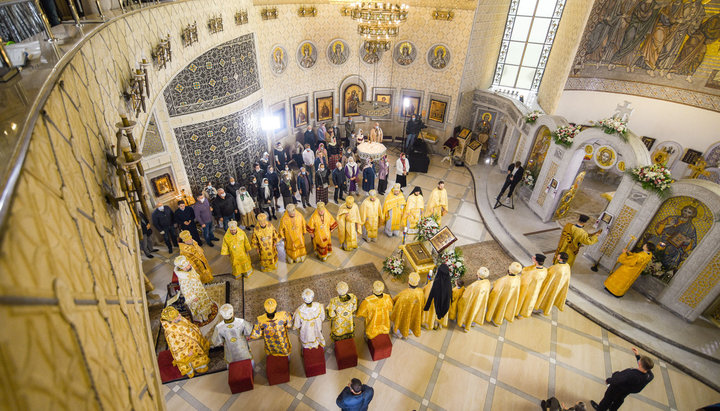
Below is a photo from the Divine Liturgy which was officiated by the Primate of the UOC on the same day at the Kyiv-Pechersk Lavra for comparison:
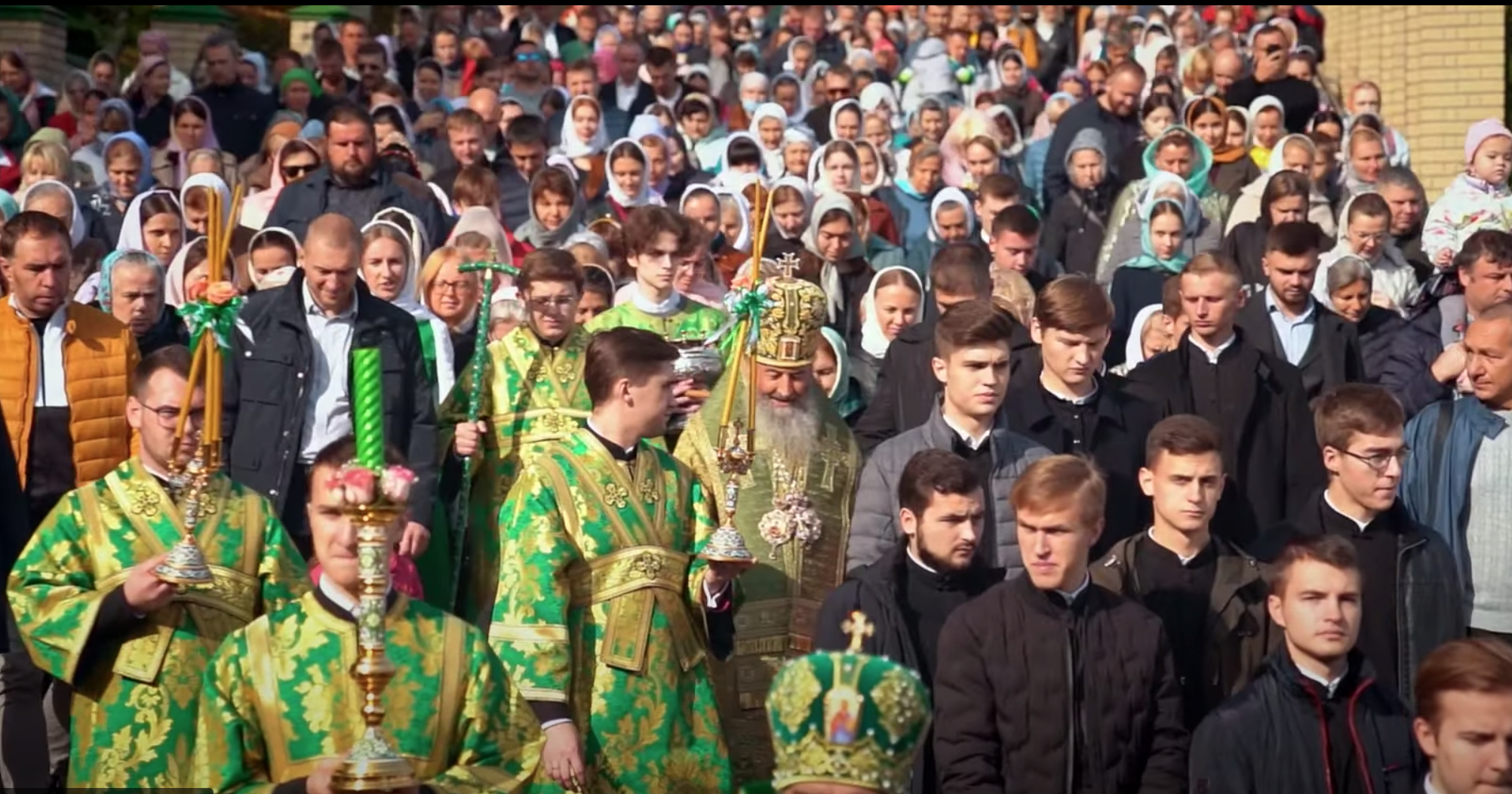
You'll agree that the difference is huge. This comparison is of the same weight class– Kyiv, Sunday worship, officiated by the heads of their church structures. It is clearly seen here that the believing people simply do not join the Ukrainian schismatics.
But let's get out of Kyiv and take a look at the “divine services” of the OCU in other cities. Here is a photo from the OCU Cathedral in Chernihiv, where one of the most famous “hierarchs” in the OCU, spokesman of this structure, “bishop” Eustratiy Zoria, on Sunday service on October 18, 2020. In the temple we see about 10-15 people.
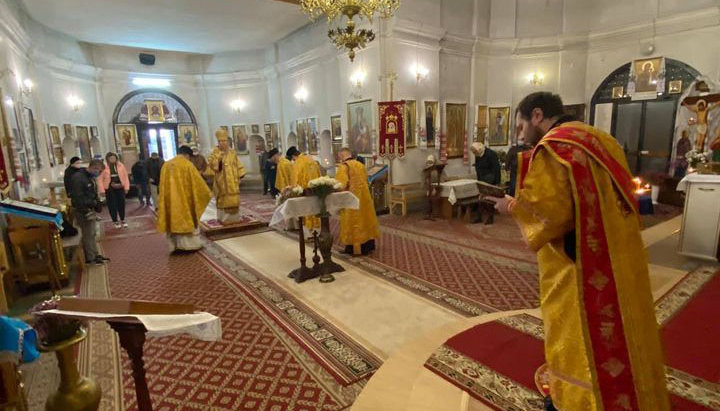
We can see the same frustrating picture in other temples belonging to the Ukrainian schismatics.
Bukovyna is one of the most religious regions of Ukraine. However, as we see, with a large confluence of “hierarchs” (there are four of them) and “clergy”, the OCU is practically an empty church too. Here is a photo of the conciliar "divine service" of the representatives of the OCU, which took place in Chernivtsi on October 27, 2020, on the day of memory of St. Paraskeva of Serbia:
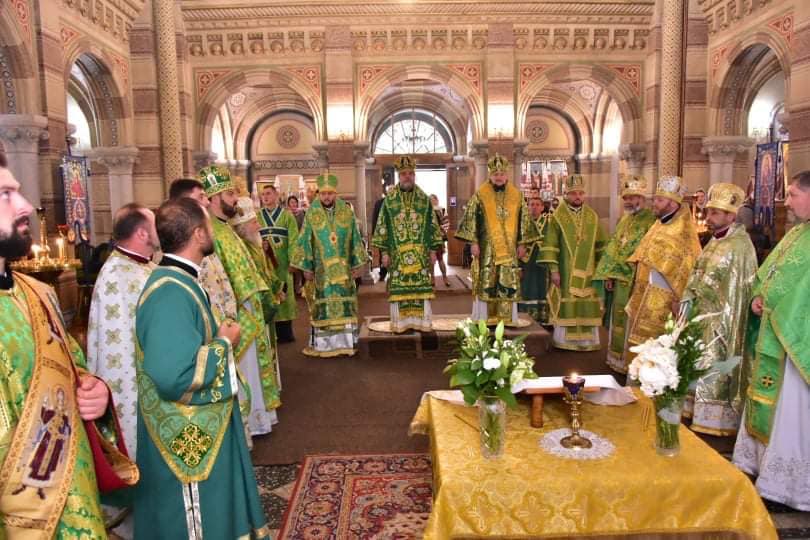
This is also the case in Vinnytsia. On November 3, 2020, a "divine service" was held at the Vinnitsa Cathedral of the OCU, where the "hierarchs" of the OCU Alexander (Drabinko) and Tikhon Petraniuk arrived on the occasion of the birthday of the former Metropolitan of the UOC Simeon (Shostatsky). Apart from them and the "priests", several dozen parishioners gathered in the church.
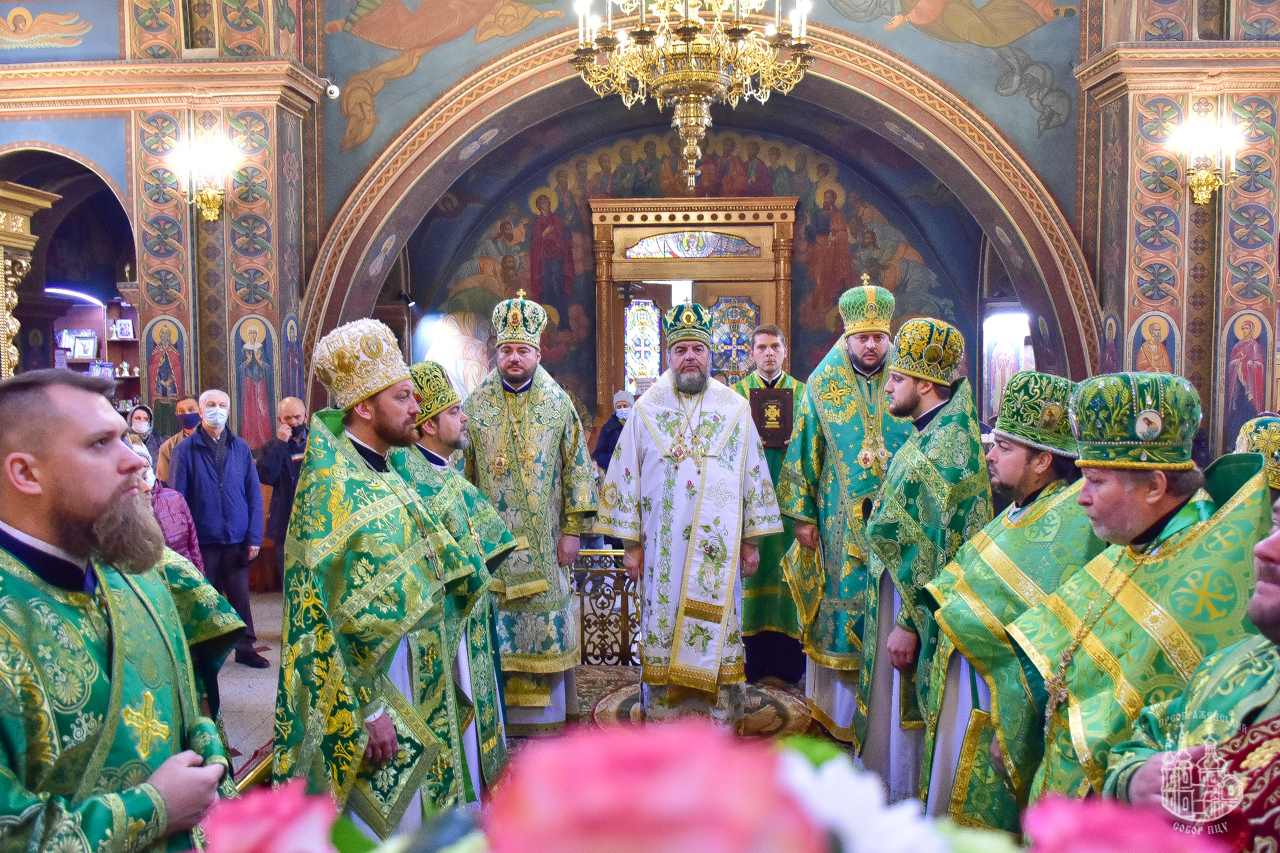
However, not so long ago, on this day, a completely different pattern could be seen in the Vinnytsia Cathedral. Here is a photo taken on November 3, 2017 (a year before the granting of the Tomos and the transition of Metropolitan Simeon to the OCU) from almost the same perspective as the photo of 2020:
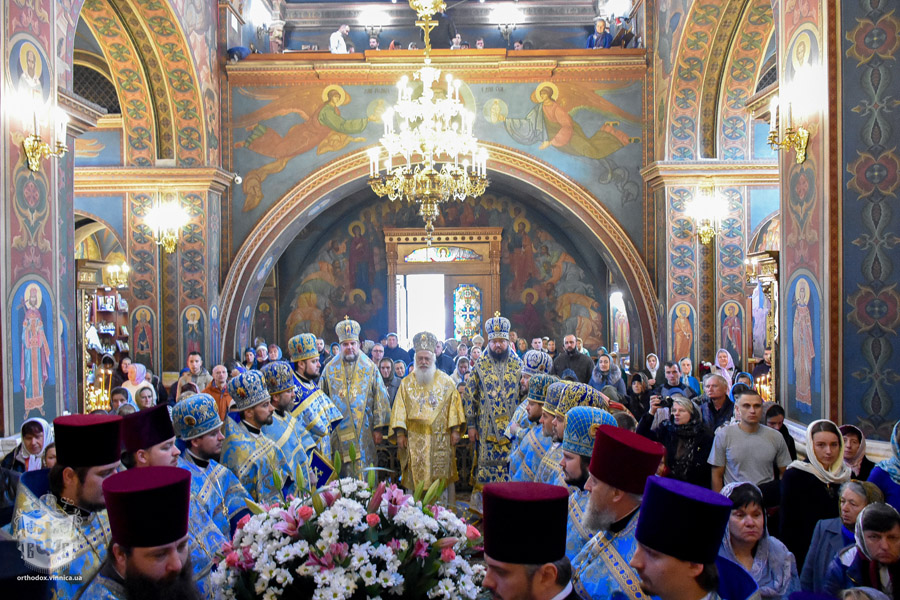
Of course, there can always be an element of chance, when, for some reason, the temple may be insufficiently filled (diseases of parishioners, mass visits to summer cottages and vegetable gardens, etc.), but in most cases the temples of the OCU do not impress with the number of it believers ... This is all the more strange when we hear the victorious statements of the leadership of this structure about the majority of Ukrainians supporting the OCU.
Therefore, no matter how many supporters of the Ukrainian split try to convince us that the majority of citizens of our country support their structure, the facts, clear and obvious, testify to something else. All assurances that the OCU has united all Orthodox Ukrainians are simply false.
In this regard, a reasonable question arises – with whom did the Greeks, who had recognized Dumenko as the “primate” of the Church in Ukraine, unite? With the majority of Orthodox Christians in Ukraine? Of course, no. They united with the schismatics, who, with the help of politicians, received "autocephaly", but did not cease to be schismatics because of this fact. On the contrary, Orthodox Christians “vote with their feet”: they go to those churches where the grace of God is present, and to the Church that preaches Christ, rather than national or patriotic values. As in the case of the head of the St. Nicholas Monastery of the OCU in Dubno, Merkuriy Bikira, who decided to literally put on the flag of Ukraine with a map of the state embroidered on his back. The coat of arms of Ukraine is also depicted on the cassock of the “priest”.
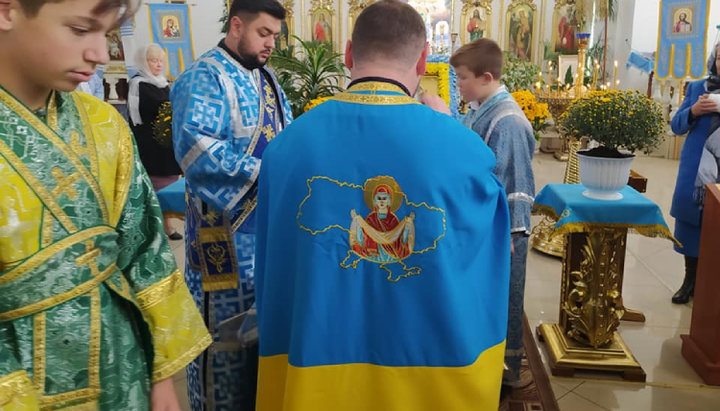
Is the peace in Ukraine restored?
No. Another task of the Tomos was to "restore peace in Ukraine" and end religious strife. The head of Phanar believes that this task has been finalized. On November 2, 2020, he said, “In the context of my responsibility for the stability and unity of Orthodoxy, the granting of Autocephaly to the Church of Ukraine is included. This happened with the absolute certainty that this is how normal order is restored and that ecclesiastical life in Ukraine is beneficially affected."
We will omit the thesis that “this is how”, but not through repentance, the canonical order is restored in the Church. The non-ecclesiastic nature of the theses is too obvious. Nevertheless, the assertion that "ecclesiastical life in Ukraine is beneficially affected" by the recognition of Ukrainian schismatics requires more careful consideration. There is a complete impression that the people who have recognized the OCU live in some kind of parallel reality or deliberately distort the existing one.
In Ukraine, relative peace in the religious sphere came not with the Tomos, but with a change of power, and now the situation risks returning to what it was in the period from 2014 to 2019. We almost constantly witness the persecution of Orthodox Christians by the adherents of the OCU. Only the recent months of 2020 have been marked by the persecution of Orthodox Christians in Zolochiv, the terrible beating of the believers of the UOC in Zadubrivka, the beating of the priest and parishioners of the canonical Church in the village of Pryputni and a lot of other facts of the inhuman attitude of the OCU supporters towards those whom they consider to belong to the wrong Church."
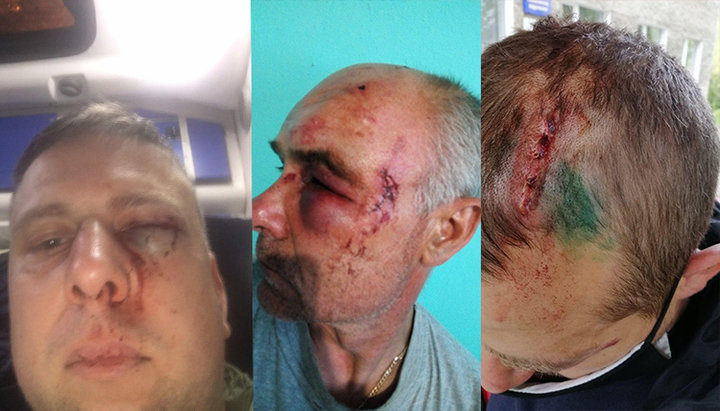
Where is the “beneficial affection” from the Tomos for Ukraine? There is none and cannot be any. Because the benefit for the Church is not about the mechanical granting of "autocephaly" to the breakaway group, but in the return of schismatics to the Church through repentance and confessing to their mistakes. Without doing this, one cannot bring peace to Ukraine. So if Patriarch Bartholomew cares so much about “normal order and ecclesiastical life” in our country, if he worries about those who have been deprived of communion with World Orthodoxy for many years, then he should call on the worshipers of the OCU to repent before the Church and to end hostility and hatred towards millions of the UOC believers.
The benefit for the Church is not about the mechanical granting of "autocephaly" to the breakaway group, but in the return of schismatics to the Church through repentance and confessing to their mistakes. Without doing this, one cannot bring peace to Ukraine.
This narrative is so obvious that other Churches also speak out about it. Thus, Metropolitan Nikiforos of the Orthodox Church of Cyprus stated that "the granting of autocephaly to the Ukrainian Church was aimed at achieving peace for the Church existing there, but so far it has not been achieved."
Vladyka is sure that it would be logical to expect the Patriarch of Constantinople to “convene either a Pan-Orthodox Council or a Council of Primates to solve this problem” if this goal is not achieved. However, it is safe to say that the head of Phanar will not agree to this. At least the current one.
As for our Church, it has grown strong. After the Tomos event, all those who were looking not for Christ, but for something else, left it. But what is gratifying – there is quite a few who have left.
There have left just enough to free the Church from the impurities of the world to make Her the pure Bride of Christ. The main task now is not to lose this purity, and God will take care of everything else.
